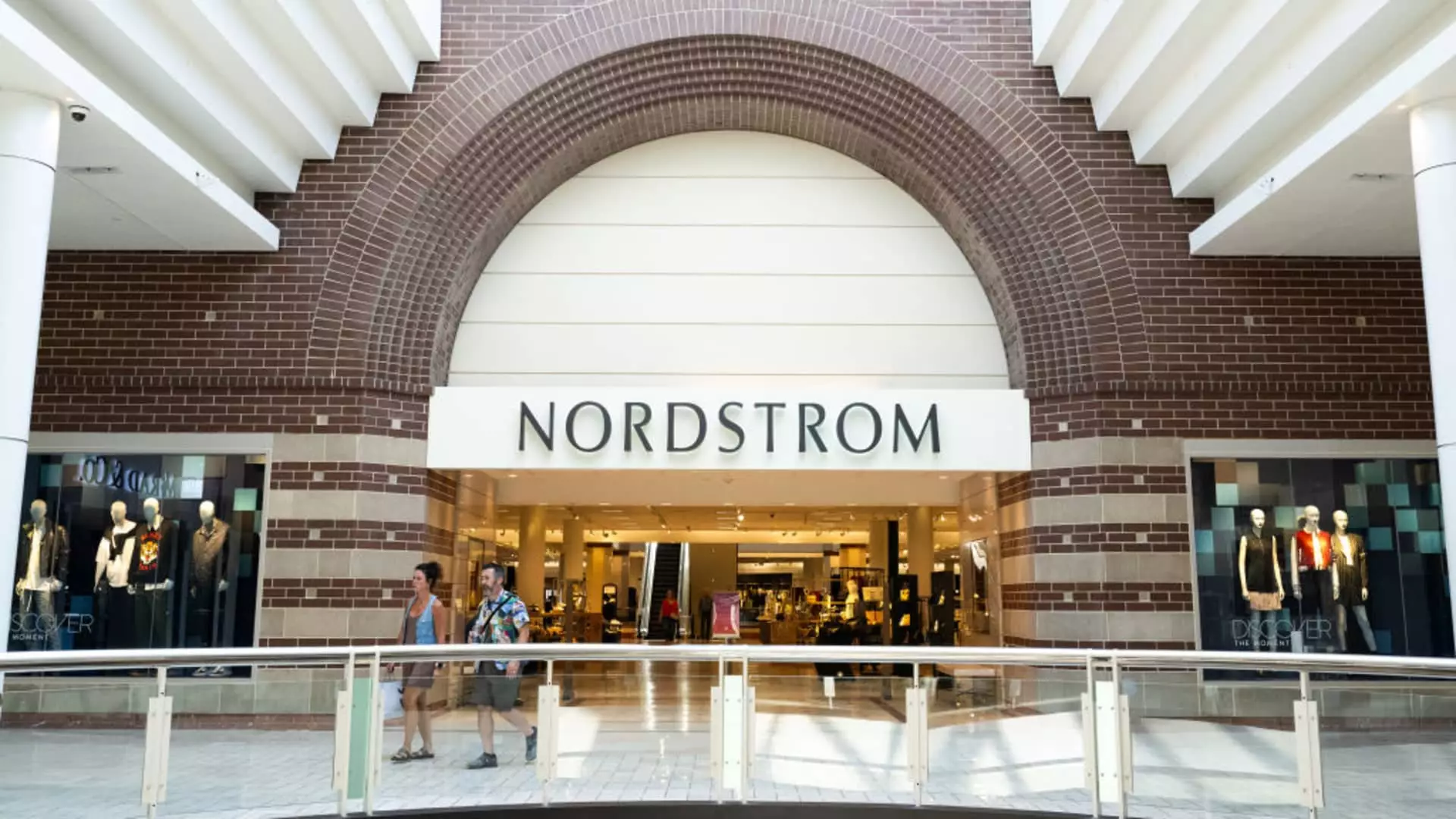The stock market remains a hotbed of activity, especially as midday trading reveals how various companies are responding to recent developments. Investors are acutely aware that fluctuations are driven not just by overall market conditions, but also by individual performance metrics, corporate announcements, and broader economic trends. This article offers a comprehensive analysis of the latest stock movements, shedding light on several major companies that have made headlines today.
Nordstrom’s shares fell sharply, down 10%, following a statement from its CEO, Erik Nordstrom. The retailer noted a slowdown in sales that began late last month, which exacerbates concerns about consumer spending ahead of the holiday season. Although Nordstrom’s third-quarter revenue reached $3.46 billion, higher than the $3.35 billion projected by LSEG analysts, the softening demand is raising alarms. Investors often look for consistent revenue growth, especially from established retailers, and any sign of weakness can lead to sharp declines in stock prices, as we’ve seen here.
HP and Dell: A Dismal Outlook
Moving to the tech sector, both HP and Dell Technologies reported disappointing earnings guidance. HP’s shares fell 13%, indicating anxiety among investors as the company projected earnings to fall significantly short of expectations—forecasting between 70 and 76 cents per share compared to the anticipated 85 cents. Similarly, Dell Technologies experienced a 13% plunge in its stock value due to underwhelming fourth-quarter forecasts coupled with a revenue miss. The decline in personal computer sales is markedly shifting the market landscape, and both companies must pivot strategically to regain investor confidence.
Urban Outfitters: A Bright Spot
In stark contrast to the struggles experienced by Nordstrom, HP, and Dell, Urban Outfitters saw its stock soar 14% after posting better-than-expected adjusted earnings of $1.10 per share in the third quarter. With revenue hitting $1.35 billion, surpassing the $1.34 billion expected, it appears that Urban Outfitters is effectively navigating the current retail climate. This positive momentum showcases how agile retail strategies and customer engagement can lead to significant market jumps despite broader economic challenges.
Cryptocurrency Stocks Rebound
As the cryptocurrency market trends upward, stocks tied to these assets responded positively. Bitcoin’s resurgence, approaching the $100,000 mark after a drop earlier in the week, boosted shares across crypto-related companies. Coinbase saw an uptick of over 1.5%, MicroStrategy advanced by 6%, and Robinhood gained more than 3%. This surge highlights the volatile nature of cryptocurrency investments and reflects how intertwined traditional stock markets have become with digital asset performance.
In cybersecurity, CrowdStrike’s stock dipped by 5.9% amid softer-than-expected fourth-quarter guidance. The company projected earnings that just skimmed analyst expectations, which may indicate investor fatigue in a sector that once thrived during heightened concerns over data breaches. CEO George Kurtz’s remarks about anticipated growth in annual recurring revenue coming later than expected may have unsettled investors looking for immediate returns.
In a notable shift for the clean energy sector, SolarEdge Technologies’ shares surged 15%. The decision to shut down its energy storage division and reduce its workforce by approximately 12% appears to have reassured investors. Although stocks in clean energy have been somewhat volatile in 2024—with SolarEdge down about 84% this year—this decisive action could signal a stronger focus on profitability and operations moving forward.
Overall, today’s midday trading reveals a mixed bag of performances across sectors. Investors are wary, navigating through cautious earnings forecasts and amidst broader economic uncertainty. Companies like Urban Outfitters might offer glimmers of hope, while traditional players such as Nordstrom, HP, and Dell struggle under the weight of shifting market demands. Understanding these fluctuations is critical, as they signify not only immediate market sentiment but also potential long-term trends that could define the economic landscape ahead. As we look toward the future, companies must be agile and innovative, adapting to the currents of consumer behavior across changing economic tides.

